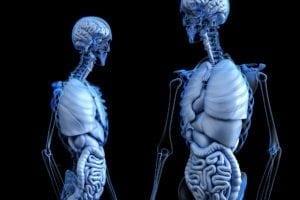Welcome to the Rare Classroom, a new series from Patient Worthy. Rare Classroom is designed for the curious reader who wants to get informed on some of the rarest, most mysterious diseases and conditions. There are thousands of rare diseases out there, but only a very small number of them have viable treatments and regularly make the news. This series is an opportunity to learn the basics about some of the diseases that almost no one hears much about or that we otherwise haven’t been able to report on very often.
Eyes front and ears open. Class is now in session.

The disease that we will be learning about today is:
Achalasia
Also known as esophageal achalasia.
What is Achalasia?
- Achalasia is a condition affecting the smooth muscles of the digestive tract in which the muscle fibers are unable to relax.
- While this usually impacts the sphincter of the lower esophagus, the condition can appear at different points of the digestive system
- When the lower esophageal sphincter is impacted, it is unable to open, which prevents food from passing into the stomach
- The condition impacts about 1 in 100,000 people every year
- Achalasia was first described in 1672 by Sir Thomas Willis, an English physician
How Do You Get it?
- Primary achalasia, in which the conditions appears without any other diseases or syndromes, does not have a known cause
- Potential risk factors include:
- Unusual eating habits
- Poor diet
- Breathing problems
- History of autoimmune disease
- Some evidence exists of a genetic component, but there have been no definitive discoveries
- Achalasia also occurs as a defining symptom of the the syndrome achalasia microcephaly
- The condition appears alongside microcephaly (small head size) and intellectual disability
- It is incredibly rare
- The condition can also appear as part of several other diseases, such as:
- Chagas disease, an infectious illness prevalent in South America
- Esophageal cancer
- Triple-A syndrome
- Most patients are between 30 and 50 years old; no bias towards one gender or the other exists
What Are The Symptoms?
- Symptoms of achalasia affecting the esophagus include:
- Difficulty swallowing
- This tends to worsen as the condition progresses
- Weight loss
- Chest pain
- Chest pain can be severe for some patients, and can easily be mistaken for a heart attack
- Regurgitating food
- Coughing while lying down
- There is also a risk of aspiration, in which food or fluid trapped in the esophagus is inhaled
- Since food cannot pass into the stomach, it remains trapped in the esophagus, causing to expand and reach a state called megaesophagus. Ultimately, the contents are regurgitated
- In late stage disease, the organ is often heavily dilated, which may require surgical intervention
- Difficulty swallowing
How Is It Treated?
- There is no cure for achalasia. However, a number of treatment approaches have been developed that can improve symptoms
- In cases of mild or moderate disease, nifedipine administered sublingually can improve outcomes for 75 percent of patients.
- Nifedipine is effective because it reduces pressure on the lower esophageal sphincter. Other calcium channel blockers such as nitroglycerin and isosorbide dinitrate have similar benefits, but side effects often appear, such as swollen feet and headaches
- In addition, these therapies often stop working after several months
- Botox can be administered to paralyze the muscles that hold the sphincter shut, but once again, the effect is only temporary, lasting about six months. It can also cause scarring so is only recommended for patients that can’t risk surgery, such as the elderly
- Pneumatic dilation using a balloon that is rapidly inflated in the lower esophageal sphincter can be an effective long term approach, and is better for patients aged 40 or older. This approach also risks causing scarring.
- The most definitive treatment for achalasia is surgery in the form of myotomy.
- An approach called Heller myotomy benefits around 90 percent of patients.
- A less invasive variant called per-oral endoscopic myotomy (POEM) was developed by Japanese physicians in 2008.
- Outcomes with these approaches are very similar
- Survival rate at 20 years is 76 percent in developed countries
- Even after successful treatment, swallowing problems may still appear
- Monitoring should be conducting annually, to evaluate the possible need of further treatment and to check for signs of reflux
Where Can I Learn More???
- Check out our cornerstone on this disease here.
- Learn more about this condition from the Achalasia Awareness Organization.








